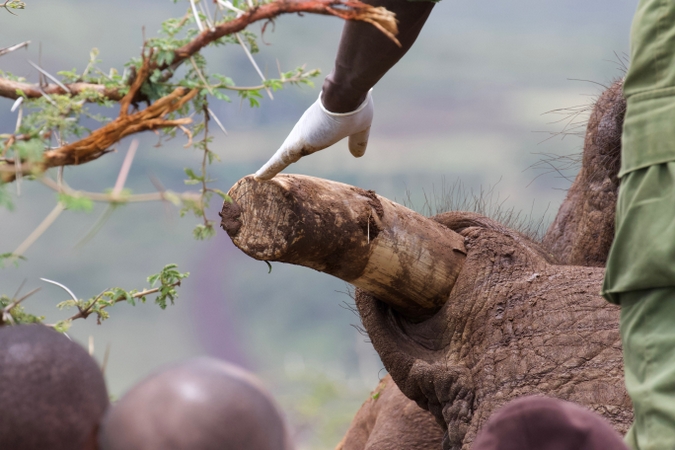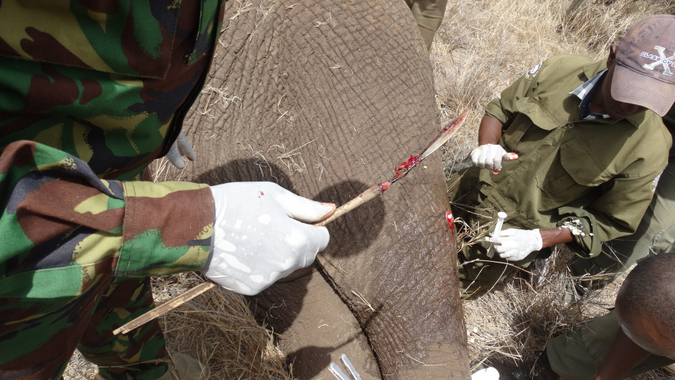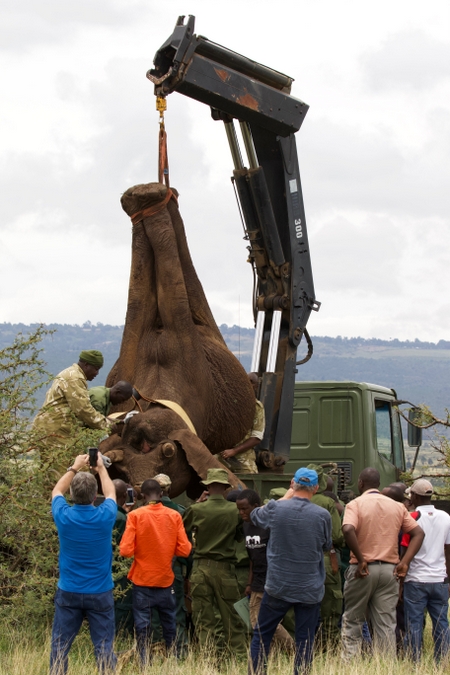
Written by Iris Breeman – manager of Lewa Wilderness in Lewa Wildlife Conservancy
Since 1995, Lewa Wildlife Conservancy in Kenya has been home to hundreds of elephants and offers them a safe refuge during heightened cases of insecurity in other areas. Unfortunately, cases of human-elephant conflict have been on the rise due to diminishing natural resources across the landscape for the elephants, and an increase in human population and settlement.
In some cases, farmers may lose their entire livelihoods because of elephants destroying their crops and the water irrigation systems, which often drives families to bankruptcy. Retaliatory attacks put both human and elephant lives at risk.

After much deliberation and consultation, a translocation exercise to Tsavo was planned, where individual elephants (often involved in conflict cases) would be moved. While translocation is not a silver bullet for human-wildlife conflict, it provides a reasonable compromise. It saves the animals from death through retaliatory attacks and helps maintain the delicate balance between conservation and livelihoods in an ever-changing ecosystem.
The elephants new home, Tsavo, is surrounded by sparsely populated settlements, meaning cases of conflict are more unlikely in that landscape compared to Lewa. It is also considered a favourable habitat for elephants, already hosting thousands of other pachyderms.

Going behind the scenes
The lodges on Lewa have close ties to Lewa Wildlife Conservancy. As a guest, you can visit the conservancy’s headquarters to get a look behind the scenes. Not many guests realise this, but besides patrolling the terrain and monitoring the rhinos, the community plays a big part in conservation and forms the backbone of Lewa.
“Without their direct involvement in conservation, without practising inclusive conservation,” as Geoffrey Chege (Lewa’s Head of Conservation) calls it, “it would not be possible to be free of poaching incidents for over 5 years”. It leaves an impression: this place is much more than a wildlife safe haven. To make conservation even more ‘real’, the Lewa Wildlife Conservancy occasionally allows guests to witness specific exercises.
Nevertheless, I’m stunned when we get an invitation to witness the move of an elephant from Lewa to Tsavo to mitigate the human-elephant conflict.

Prima ballerina
We gather on a ridge; the elephant is within sight, and he’s happily munching away. I’ve gathered from the stories I’ve heard that this is one clever and notoriously smart elephant! His latest trick is to push over fence poles to avoid having to touch the wires and then walking over that one pole like a prima ballerina.

Moving 6 tons
A helicopter lands among dozens of people and vehicles. It’s here to pick up the veterinarian that will administer the tranquilliser. Looking around I see a host of wildlife professionals, together making up a team of veterinarians, researchers, and coordinators from Lewa Wildlife Conservancy, Borana Conservancy, Kenya Widlife Services and Save the Elephants. The cars transporting these professionals move in a distinct order. The (limited) number of lodge cars are last, naturally.
The truck and trailer are ready to transport the elephant, and the tractor is on stand-by in case a vehicle gets stuck. Nothing in this operation is left to chance, though everyone involved seems relaxed. They’re focused, but still find time to talk to guests, answering their dozens of questions: “Sedating the elephant from the air is quicker and therefore less stressful for the elephant…”; “It will take about 5-10 minutes for the elephant to go down…”; “We have waited for him to be in this area, close to the road…”; “We don’t want to manoeuvre too long…”

Before we know it the elephant has a bright pink tranquilliser dart in his rear. The team moves in – swift but orderly. No running, no shouting.
A small stick is placed in the elephant’s trunk to help keep it open and ensure the elephant is able to breathe properly. One person monitors the breathing, while another monitors the heart rate. The elephant is calm, so measurements and samples of blood and tissue are taken. The truck and trailer park right beside the elephant as a crane connected to the truck carefully lifts the 6-ton animal onto the trailer.
Once secured – and all the while accompanied by vets – the elephant is transported to the edge of the conservancy. There, he is carefully moved into a double cab wildlife container. As he wakes up he gets to his feet and as many of us peek inside, he pees on the floor – a healthy sign of relaxation and muscle control. It’s enough reason for all of us to back off from the container.

Hundreds of bystanders including an entire school have gathered. They’re happy about the relocation, thanking those involved.
And then it dawns on me: we’re in this spot for a reason! The symbolic message of this relocation is much bigger than just moving elephants to avoid conflict. By listening to the communities, Lewa Wildlife Conservancy shows its true colours. It literally says: “We’ve got your back, as you have ours.”

To comment on this story: Login (or sign up) to our app here - it's a troll-free safe place 🙂.![]()






